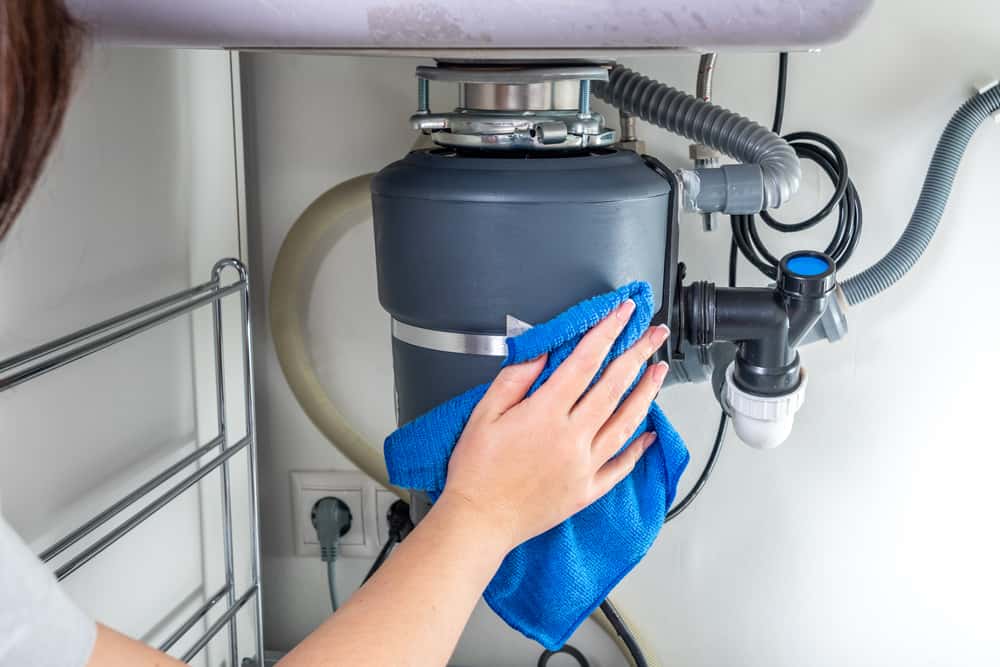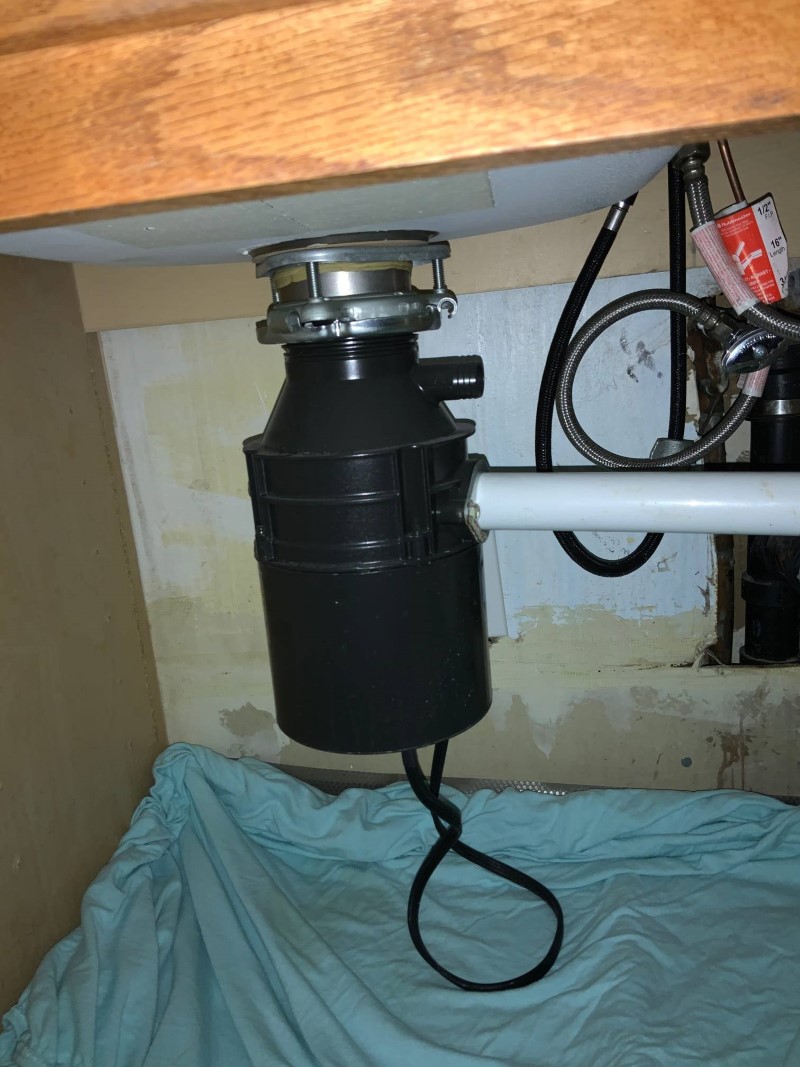Proven Ways to Fix a Leaking Waste Disposal Unit
Proven Ways to Fix a Leaking Waste Disposal Unit
Blog Article
We have discovered the article about How to fix a pretty consistent leak from my garbage disposal down the page on the internet and decided it made sense to relate it with you on this site.

Waste disposal unit are necessary kitchen area home appliances that help in throwing away food waste effectively. Nevertheless, a dripping garbage disposal can be a frustrating and unpleasant issue to deal with. Fortunately, lots of leaks can be dealt with quickly with a few simple actions. In this article, we will certainly discuss just how to fix a dripping garbage disposal successfully.
Intro
Waste disposal unit are mounted under kitchen area sinks and are developed to shred food waste right into smaller pieces, permitting it to go through the plumbing system conveniently. While these gadgets are generally trustworthy, leaks can occur in time due to deterioration, loose links, or damage to the unit.
Step-by-Step Guide to Fixing a Dripping Garbage Disposal
Shut off the Power
Before attempting any repairs, guarantee that the power to the waste disposal unit system is shut off to prevent the risk of electric shock.
Situate the Leak
Recognize the specific area of the leakage and identify the reason
Tighten up Connections
Utilize a wrench to tighten up any loosened connections in between the disposal unit and the plumbing system.
Change Seals or Gaskets
If the leak is due to worn seals or gaskets, eliminate the old elements and change them with brand-new ones.
Patching Fractures or Holes
For fractures or holes in the disposal system, use epoxy or a suitable patching material to seal the damaged location.
Determining the Resource of the Leak
Before attempting to fix a dripping waste disposal unit, it is vital to determine the source of the leak. This can generally be done through visual examination or by performing easy tests.
Visual Examination
Check the garbage disposal device very carefully for any indicators of water leakage. Pay very close attention to locations around seals, gaskets, and connection factors.
Evaluating for Leakages
One method to examine for leaks is by running water via the disposal unit and checking for any visible indications of leakage.
Typical Sources Of Leaks in Trash Disposals
Worn Seals and Gaskets
Seals and gaskets play an essential role in protecting against water from dripping out of the waste disposal unit. With time, these elements can wear away, causing leaks around the disposal device.
Loose Connections
The links in between the garbage disposal and the pipes system can come to be loose gradually, creating water to leak out during procedure.
Splits or Openings in the Disposal Unit
Physical damage to the waste disposal unit, such as splits or openings in the real estate, can also result in leaks.
Tools and Products Needed for Taking Care Of a Dripping Waste Disposal Unit
Prior to starting the fixing procedure, gather the required tools and materials, including a screwdriver, adjustable wrench, plumber's putty, replacement seals or gaskets, and epoxy or patching product for fixing fractures or openings.
Checking the Waste Disposal Unit After Repair Work
Once the fixing is full, evaluate the garbage disposal by running water via it to make sure that the leak has actually been solved.
Preventive Maintenance Tips to Prevent Future Leakages
To avoid future leakages, it is necessary to do regular maintenance on your waste disposal unit. This includes keeping it tidy, avoiding putting non-food things or hard objects down the disposal, and regularly looking for leakages or other issues.
Final thought
Finally, dealing with a leaking garbage disposal is a reasonably uncomplicated procedure that can be finished with fundamental tools and materials. By adhering to the steps described in this write-up and practicing preventive maintenance, you can keep your garbage disposal in good working condition and avoid pricey fixings in the future.
What to Do About a Leaking Garbage Disposal
A leaking garbage disposal often goes unnoticed until you confront a sopping cabinet, a foul-smelling puddle, or an audible drip-drip-drip from the unit. The fix can be frustrating, too, because the leak can stem from a number of components in the system. Fortunately, with a little sleuthing, you can zero in on the leak and—depending on the exact location—stop the icky oozing and repair the component that caused it. Worst case scenario, if it turns out that the garbage disposal must be replaced, installing a new one is a reasonable do-it-yourself task for those with basic plumbing skills. Read on to keep the cash you’d otherwise hand over to a pro.
Prepare to find the leak
Prior to testing the garbage disposal for leaks, unplug it at the wall outlet and turn off the power from the breaker box to prevent electrical shock. Then insert a watertight sink stopper into your sink drain and wipe the unit dry with a clean cloth. In any handy container, mix a few drops of food coloring into a few cups of water, and pour the dyed water onto the sink stopper to help you locate the leak.
Investigate the source
the top, where the disposal meets the sink drain the side, where the dishwasher hose or main drain pipe connects to the disposal or the bottom of the unit Inspect each of these locations while gliding a light-colored rag over the unit; the dyed water will readily show on the rag and reveal the location of the leak. If a leak isn’t immediately apparent, remove the sink stopper and pour a few more cups of dyed water down the sink drain, then check for leaks again. Leaks near the top of the unit are more likely to show themselves while the sink is plugged, while side and bottom leaks are more noticeable while the sink is unplugged.
The metal sink flange that sits directly inside the sink drain is typically sealed around the top with plumber’s putty (a clay-like sealant) and then secured from under the sink with bolts. If the plumber’s putty deteriorates, or the bolts loosen, the flange can no longer form a watertight seal between the sink drain and the disposal—which could cause a leak at the top of the unit.
To reseal the leaky flange, you must first detach the garbage disposal. Start by loosening the screws securing the main drain pipe to the disposal, then loosen the screws in the metal clamp securing the dishwasher hose to the disposal and detach the drain pipe and dishwasher hose from the disposal. Loosen the screws in the mounting ring that connects the disposal to the metal mounting assembly beneath the sink, then pull down the disposal and carefully set it on a clean, dry surface. Loosen the bolts in the mounting assembly with a wrench, then pull down the mounting assembly and set it near the disposal.

I am just very drawn to How to fix a pretty consistent leak from my garbage disposal and I really hope you enjoyed the entire blog entry. Make sure you set aside a second to distribute this blog post if you enjoyed it. Thank you for your time. Visit again soon.
Schedule Free Estimate Report this page